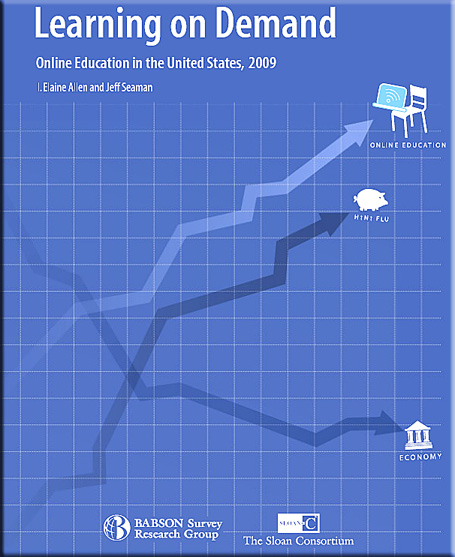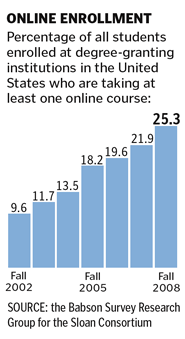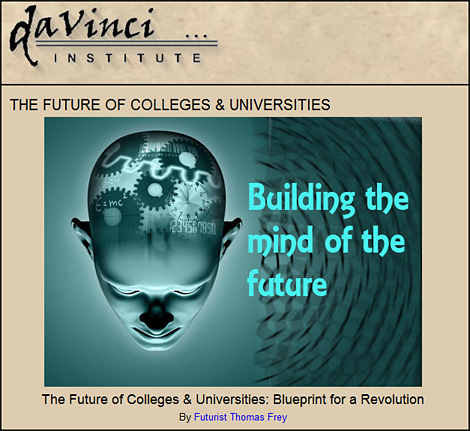On page 7 of 29 (actual page is page 3) of “Learning on Demand: Online Education in the United States, 2009”:

HAS FACULTY ACCEPTANCE OF ONLINE INCREASED?
Background: The perception of chief academic officers of faculty acceptance of online teaching and learning has changed little in the last six years.
The evidence: While the number of programs and courses online continue to grow, the acceptance of this learning modality by faculty has been relatively constant since first measured in 2002.
- Less than one-third of chief academic officers believe that their faculty accept the value and legitimacy of online education. This percent has changed little over the last six years.
- The proportion of chief academic officers that report their faculty accept online education varies widely by type of school but reaches a majority in none.
From DSC:
Why is this I wonder…?
- Is it because they didn’t grow up with these technologies and therefore, don’t believe in their promise/effectiveness? (I can understand that. )
- Is it due to lack of proper incentive systems? (I can appreciate that as well.)
- Are there fears involved? (I can understand that. )
- Is it because power/control needs to be shared — i.e. it requires more of a team-based approach to do it well?
- Is it because it’s a lot of work to get on board the elearning train?
- Is it due to lack of interest?
- Is it because us instructional technologists and instructional designers haven’t done a good enough job in making the case for online learning?
Questions:
- Have these faculty members actually gone back to school anytime recently in order to take an online course and to give this learning modality a shot?
- Do such viewpoints serve the students, universities, colleges well?
Comments:
- Granted, online learning is not for everybody, but for those who are successful at it, they are WELL positioned for the future.
- Also…I’m not seeing nearly the pace of innovation in the face-to-face world as I’m seeing in the online/networked world (10,000 heads are better than 1).
- Online learning has just begun to hit its stride.
- It won’t be long before folks value and respect online learning moreso than strictly traditional face-to-face learning. (Personally, I’m more and more sold on the hybrid model as a “heavy lifter” within our learning ecosystems — due to its ability to bring together the best of both of these teaching and learning worlds.)
I’m sorry if this is too heavy handed…but I’m tired of faculty dogging something they, themselves, haven’t given a fair chance. In future postings, I’ll attempt to provide some compelling evidence to help back up why I’m pro-online learning as well as pro-hybrid learning.











